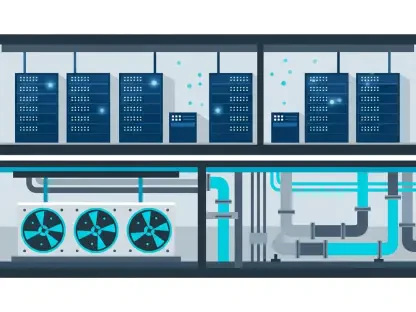In a rapidly evolving telecom landscape, the global mobile network API market stands at a critical juncture, grappling with slower-than-expected growth while holding immense potential for future innovation. Despite the high expectations surrounding the monetization of 5G capabilities through network APIs, recent forecasts have been adjusted to reflect a more cautious outlook. Research from industry experts indicates that the market, once projected to reach significant milestones sooner, is now expected to hit $15 billion by 2028 and $31 billion by 2030. This recalibration highlights the operational complexities and learning curves faced by telecom operators as they navigate uncharted territory. Yet, amidst these challenges, early success stories and emerging use cases suggest that the foundation for a transformative market is being laid, sparking curiosity about how these tools will reshape industries in the years ahead.
Current Challenges in Market Development
Navigating Operational Complexities
The journey to integrate network APIs into mainstream telecom offerings has proven to be a steep climb for many operators, largely due to the novelty of the technology and the shift in business models it demands. Unlike traditional mobile data services, which have well-established frameworks, APIs represent a fundamentally different approach to service delivery, requiring a deep understanding of technical integration and market positioning. Operators are still in the process of building the necessary expertise to effectively launch and scale these services. Additionally, the delay in rolling out APIs across multiple regions has further slowed progress, as global standardization and compatibility remain elusive. Collaborations with aggregators such as GSMA Open Gateway and CAMARA are essential, yet they add another layer of complexity to an already intricate process. This steep learning curve underscores the broader challenge of adapting to a market that operates on innovation and speed.
Revised Forecasts and Market Readiness
Compounding the operational hurdles is the sobering reality of revised revenue projections, which reflect a more conservative timeline for the network API market’s maturation. Experts now anticipate that reaching key financial benchmarks will take longer than initially thought, with significant growth delayed by at least two years compared to earlier estimates. This adjustment stems from a combination of technical readiness issues and the slower-than-expected adoption by potential enterprise clients. The market’s current state suggests that while the underlying technology holds promise, the ecosystem—spanning operators, developers, and end-users—requires more time to align. These delays are not merely setbacks but rather indicators of a market still finding its footing. The focus now shifts to addressing these gaps through strategic investments and partnerships that can accelerate the adoption curve and build confidence among stakeholders.
Emerging Opportunities and Future Potential
Early Successes in Anti-Fraud and Verification
Despite the headwinds, certain segments of the network API market are already demonstrating tangible value, particularly in areas like anti-fraud and identity verification. Financial institutions, for instance, are increasingly leveraging location-based APIs to confirm consumer identities during transactions, enhancing security in an era of rising digital fraud. A compelling example comes from Brazil, where a major social media platform has adopted the Number Verification API to streamline user signups by eliminating SMS authentication, cutting the process time significantly. This early win highlights the potential for scalability as similar solutions become available in other markets. The ability of these APIs to address real-world pain points in industries reliant on trust and speed positions them as critical tools, offering operators a glimpse of the revenue streams that could emerge with broader implementation.
Expanding Applications Across Industries
Looking beyond anti-fraud applications, the horizon for network APIs is brimming with possibilities across diverse sectors such as advertising, autonomous vehicles, IoT, enterprise IT, and entertainment content distribution. Industry analysts suggest that integrating more sophisticated APIs—those focused on quality-on-demand or real-time network performance—into comprehensive enterprise solutions could unlock significant value. For instance, in autonomous driving, APIs providing network insights could ensure seamless connectivity, a non-negotiable requirement for safety and efficiency. Similarly, content delivery networks stand to benefit from APIs that optimize performance, ensuring high-quality streaming experiences. These varied applications indicate that the market’s potential extends far beyond its current scope, with operators poised to tap into new revenue models. The challenge lies in prioritizing these complex integrations while building the partnerships necessary to bring them to fruition.
Long-Term Vision for Market Growth
Reflecting on the trajectory of the network API market, it becomes evident that while immediate hurdles have slowed progress, the groundwork for long-term success is steadily being established. The cautious optimism surrounding revised forecasts is balanced by concrete achievements in specific use cases, which serve as proof points for scalability. Telecom operators, during this pivotal period, are focusing on honing their expertise and forging strategic alliances to navigate the complexities of this nascent market. Looking back, the emphasis on anti-fraud and verification APIs marked a turning point, showcasing how targeted solutions could drive adoption. As the industry moves forward, the next steps center on accelerating the development of advanced APIs for broader enterprise applications, ensuring that the market’s full potential is realized through innovation and collaboration.









